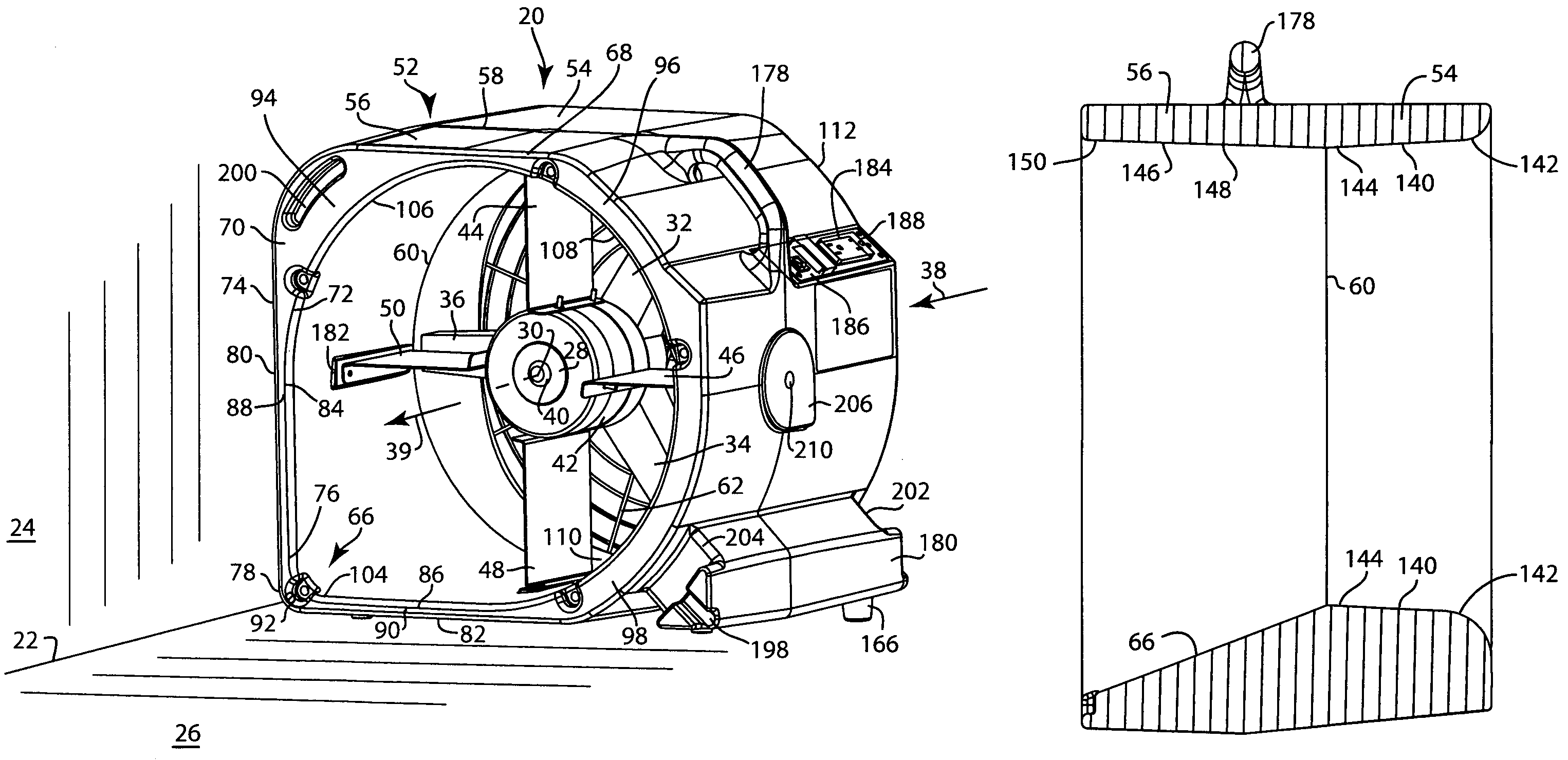Drying fan
a fan and fan body technology, applied in the direction of wind motors with parallel air flow, wind motors with perpendicular air flow, liquid fuel engine components, etc., can solve the problems of affecting the use of the fan, the most difficult area to dry, and the longest drying time, so as to increase the supply air, maximize the radii, and facilitate the use.
- Summary
- Abstract
- Description
- Claims
- Application Information
AI Technical Summary
Benefits of technology
Problems solved by technology
Method used
Image
Examples
Embodiment Construction
[0023]FIGS. 1-4 show a drying fan 20 for water damage restoration, particularly for drying a room corner 22 extending axially along an interface between a wall 24 and a floor 26. A fan hub 28 is rotational about rotation axis 30 generally parallel to the noted axial extension of room corner 22, namely preferably within a cone at a compound angle less than or equal to about 10° tapered downwardly toward floor 26 and less than or equal to about 10° tapered inwardly toward wall 24. Hub 28 has a plurality of fan blades 32, 34, 36 extending radially therefrom for moving air along an axial flow direction from upstream to downstream as shown at arrows 38, 39, upon rotation of hub 28. Hub 28 is mounted on a motor shaft 40 of electrical motor 42 mounted by stator vanes 44, 46, 48, 50 in a shrouded housing 52 having an axial flow path therethrough as shown at arrows 38, 39 along axis 30.
[0024]Housing 52 is a plastic molded member, preferably polyethylene, preferably formed by rotational moldi...
PUM
 Login to View More
Login to View More Abstract
Description
Claims
Application Information
 Login to View More
Login to View More - Generate Ideas
- Intellectual Property
- Life Sciences
- Materials
- Tech Scout
- Unparalleled Data Quality
- Higher Quality Content
- 60% Fewer Hallucinations
Browse by: Latest US Patents, China's latest patents, Technical Efficacy Thesaurus, Application Domain, Technology Topic, Popular Technical Reports.
© 2025 PatSnap. All rights reserved.Legal|Privacy policy|Modern Slavery Act Transparency Statement|Sitemap|About US| Contact US: help@patsnap.com



